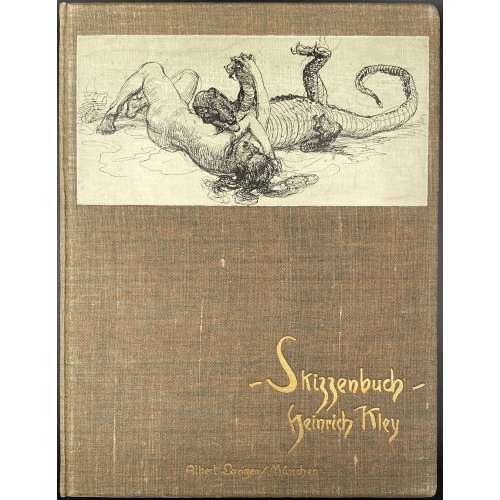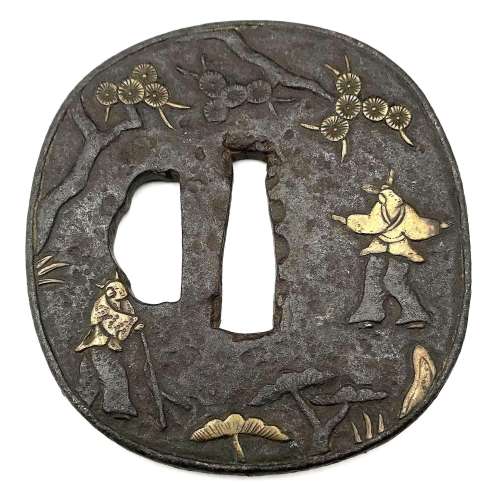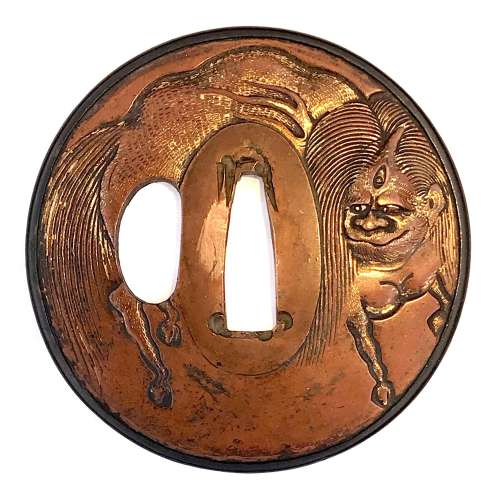The edition consists of two albums:
1) Skizzenbuch: Hundert Federzeichnungen von Heinrich Kley. — München: Albert Langen, [1909]. — pp.: [1-4] 5-63 [64], illustr. Printed by Hesse & Becker in Leipzig. Bound in the original brown moire covered boards, with a paste-down drawing on the front, gilt cover titles, original patterned endpapers.
2) Skizzenbuch II. Hundert Federzeichnungen von Heinrich Kley. — München: Albert Langen, [1910]. — pp.: [1-4] 5-64, illustr. Printed by Hesse & Becker in Leipzig; paper by Bohnenberger & Cie.; binding by E. A. Enders, Leipzig. Bound in the original bluish-gray moire covered boards, with a paste-down drawing on the front, gilt cover titles, original patterned endpapers.
The number of printed copies unknown. Reproduction of ink drawings by Heinrich Kley, 1st edition.
Dimensions of each album: 32 x 24.5 cm; Quarto. Heinrich Kley (April 15, 1863 in Karlsruhe – 1945? in Munich) was a German illustrator, editorial illustrator and painter.




